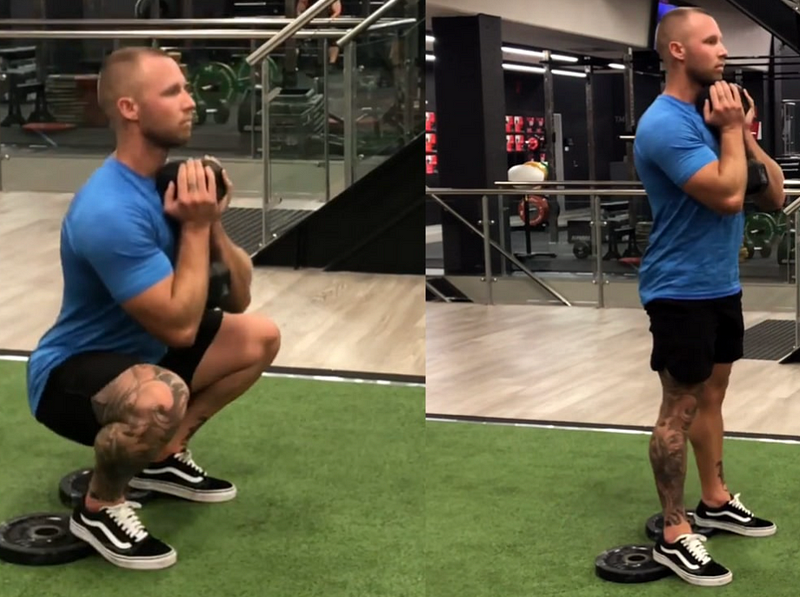Mastering Your Squat: Three Quick Fixes for Better Mobility
Written on
Understanding Active Mobility
You could be the strongest athlete in the gym, but without active mobility, your squat form may still falter. This is a crucial insight, often overlooked, as many believe that insufficient strength or balance is the primary issue affecting their squatting ability. In reality, limited mobility is usually the main culprit that hinders optimal movement.
You might not be familiar with the term "active mobility," but there's no need to worry. In this guide, I will explain its significance and provide you with three straightforward techniques to improve your squat quickly. These exercises will not only enhance your performance in the gym but will also have a positive impact on your everyday movements, making them feel smoother and more efficient. Whether you’re a gym enthusiast or a casual exerciser, these strategies are beneficial for anyone looking to enhance their movement and overall health.
Mobility First: Finding the Gaps in Your Squat
Before diving into the exercises, it's essential to grasp the concept of active mobility, as it is vital for safe and effective movement in daily life. Let’s clarify the distinction between two types of mobility:
- Passive Mobility: This refers to the range of motion a joint can achieve with external assistance (like a wall or a partner).
- Active Mobility: This describes the range of motion a joint can reach independently, without outside help.
While both types are significant, active mobility is particularly crucial when it comes to squatting. Strong active mobility lays the foundation for maintaining balance and stability while supporting weight through various ranges of motion.
Many individuals experience a significant difference between their passive and active mobility, leading to a false sense of confidence in their ability to move effectively. This discrepancy can result in frustration and confusion, especially when attempting to squat.
Active Mobility Matters
Now that we've established the importance of active mobility, let’s explore three targeted exercises that can substantially improve your squat form. These movements focus on areas that are frequently neglected: the ankles, hips, and thoracic spine. I've chosen these specific exercises to maximize their relevance and effectiveness for squatting. If you incorporate them into your routine before leg workouts, you’ll gain a considerable advantage over those who overlook mobility. Plus, they only take about five minutes!
Ankle Mobility: Ankle ABCs

Application: 1 x 26 (full alphabet per side)
- Instructions: You can perform this seated or standing. The goal is to fully utilize your ankle's range of motion by spelling out the alphabet with your foot. Take your time and make the letters large to enhance your active mobility. This exercise is also beneficial for recovery if you’ve previously sprained your ankle.
Hip Mobility: Hip C.A.R. (Controlled Articular Rotations)

Application: 6–8 per side
- Instructions: Begin in a quadruped position. Extend one leg back while keeping the knee bent. Rotate the leg outward, then flex the hip to bring the knee toward the arm, and lower it back down. If you need more guidance, I’ve included a video link below. For an added challenge, try this movement both forward and backward.
Thoracic Spine Mobility: Rising Sun Exercise

Application: 6–8 per side
- Instructions: Start in a wide squat position that feels comfortable for you. Slowly raise one arm while maintaining focus on your thumb to promote thoracic spine rotation. Keep your torso upright and avoid leaning forward. After holding for two seconds, switch sides. Aim for control; each repetition should take about five seconds.
Bonus Tip: Using Mechanical Assistance
It’s important to recognize that everyone’s body is different. For some, particularly taller individuals or those with unique body proportions, maintaining proper form during a squat can be difficult. While ankle mobility exercises are helpful, they might not be enough on their own. For these cases, consider using supportive footwear or platforms.
Using a shoe with a heel lift can be advantageous, enabling individuals with less favorable anatomical structures to squat more effectively. This approach is far more practical than attempting to squat with improper form due to physical limitations.
In Conclusion
Active mobility is the key to perfecting your squat. By learning how to control your joint movements, you'll be far ahead of those who rely solely on strength or conditioning. This practice will also enhance your overall quality of life, making all physical activities feel more manageable. Don’t let another day pass without making this essential adjustment to your squatting technique!
You’ve got this!
-David Liira, Kinesiologist
